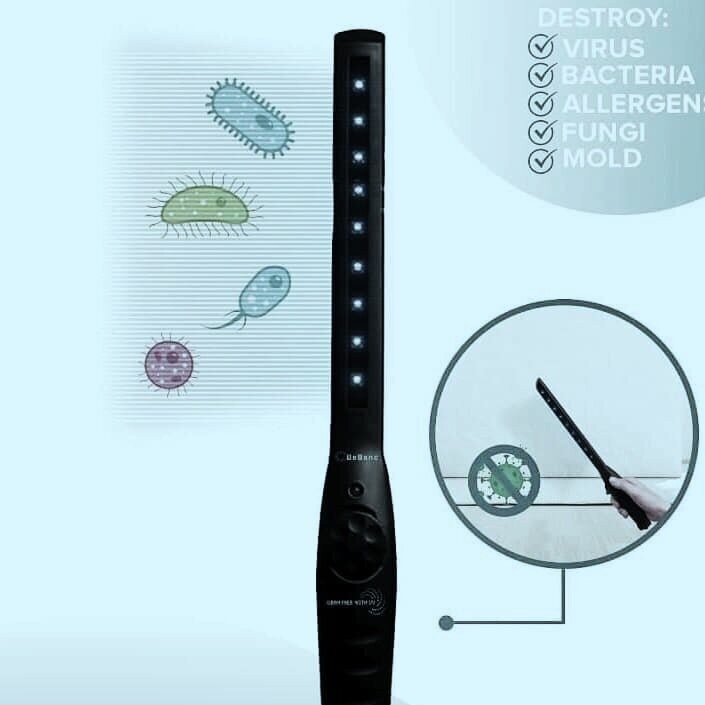What is UV Radiation and how can it be harmful or helpful?
As opticians it is our job to understand the light spectrum and how light directly impacts your ocular health. UV light or UV radiation as it is more properly termed is invisible to the human eye. Our primary source of UV radiation on earth is the sun. Just as we use invisible sunscreen on our skin to protect our tissue layers from damage, so too the eyes must be protected.
UV radiation is a type of EM (electromagnetic) energy measured on the EM spectrum and the entire light spectrum is measured in nano-meters or wavelengths. More precisely, UV is the portion of the EM spectrum that falls between X-rays and visible light.
What are the primary types of UV radiation?
The sun produces three main types of UV rays (the fourth, UVV is not part of this discussion):
UVA (315 nm to 400 nm)
- UVA rays have a longer wavelength that can penetrate the middle layer of your skin (the dermis)
UVB (280 nm to 315 nm)
- UVB rays have a short wavelength that reaches the outer layer of your skin (the epidermis)
UVC (200 nm to 280 nm)
UVA and UVB rays are the longest wavelengths and are the part of the spectrum that we filter in sunglasses to protect your eyes and in suntan lotion to protect your skin. The UVC from the sun has the shortest wavelengths and is completely absorbed by our atmosphere and never reaches deep enough into our environment to cause us harm.
When did we begin to harness UVC for disinfection?
UVC has been artificially created by man for a series of applied purposes over the years. UVC light in the form of germicidal lampshas been in use since the late 1800s to kill microorganisms such as bacteria, mold, yeast and viruses. Niels Ryberg Finsen (1860-1904) was the first to employ UV rays in treating disease and was awarded the Nobel Prize for Medicine in 1903. After World War II, UVC was used for sterilizing air in hospitals, kitchens, meat storage and processing plants, bakeries, breweries, dairies, beverage production, pharmaceutical plants and labs – anywhere microbiological contamination was a concern. In the 1950s UVC was harnessed inside air handling units to “cleanse the air” and UVC played a major role in helping control the spread of tuberculosis (TB). Additionally, UVC light has been used in water sanitation treatment since the early 1900s.
UVC light today is created through UVC LEDs and has been marketed and sold for commercial and private use. Today UVC LEDs are used for a variety of disinfecting purposes. Travel sized UVC lights have been sold by travel companies for many years as a means for frequent travelers to “sanitize” bed sheets and counter tops in hotel rooms, apartments and rental homes.
UVC wands and lamps of many varieties have become available to the public and are in demand as a direct result of highly transmissible colds and viruses like the “common cold,” a variety of dangerous seasonal flu strains, SARS, H1N1, and COVID-19 just to name a few. UVC lamps have become common again in commercial spaces like mass transit, commercial kitchens, cafeterias, food storage, processing plants, and high traffic, small and large businesses across all industry much like it was employed in WWII. Note, FDA does not approve of UVC disinfection for CPAP machines.
What’s the danger?
UVC is radiation energy that can produce ozone. Ozone is UVV and in high doses can be harmful to living cells, including lung tissue in people, pets, and plants. UVC lights used over extended periods can create O3 or ozone and rooms should be ventilated for a full 20-30 minutes after use to prevent human or pet airway irritation or cell damage.
What’s the conclusion?
In short, UVC lamps have been in use and FDA approved for many years. The safety of UVC lights as short burst disinfecting tools only comes into question when used improperly. Handheld UVC wands should not be looked into directly as this will cause corneal damage and should not be used on human skin or other living tissue on children, pets or plants. The commercial application for disinfecting high traffic businesses, bed sheets and pillows, face masks, and high touch point items is extremely beneficial particularly in this new era of pandemic viruses.

